Stained glass of Baku: Zokhrab Mutalibov’s artistry
Baku is a city where the past and present intertwine in an elegant dance of architecture, streets, and details. Every door, balcony, or pattern on a facade holds its own story, shaping the unique appearance of the capital. One of these refined elements is the stained glass windows or vitrage.
Decorative multicolored glass compositions, playing with sunlight and bringing stone walls to life, can be found in various corners of the city — from old mansions to public buildings. They are not just decorative details but symbols of artistic taste and craftsmanship of bygone eras.
There are several techniques for creating them: classic stained glass with lead cames that join individual pieces of glass, or fusing — where a mosaic of colored glass is baked into a single panel.
The themes can vary widely — from religious scenes and historical narratives to portraits and abstract patterns. Beyond their aesthetic function, stained glass windows are often used to zone spaces, adding depth, mystery, and a special atmosphere to interiors.
The word “vitrage” is of French origin, meaning “glazing” and also derives from the Latin vitrum (“glass”). The exact date of the emergence of stained glass art remains a mystery to historians. It is only known that the earliest images made of colored glass appeared in ancient civilizations such as Rome, Byzantium, and China.
In the Middle Ages, stained glass became widespread throughout Europe. The first documented examples are associated with the construction of churches: majestic windows depicting Christ and biblical figures adorned cathedrals in France, Germany, and England, filling their interiors with light and color. The art of stained glass never disappeared; it has endured through centuries and styles, and today it still retains its appeal, decorating both sacred buildings and private interiors.
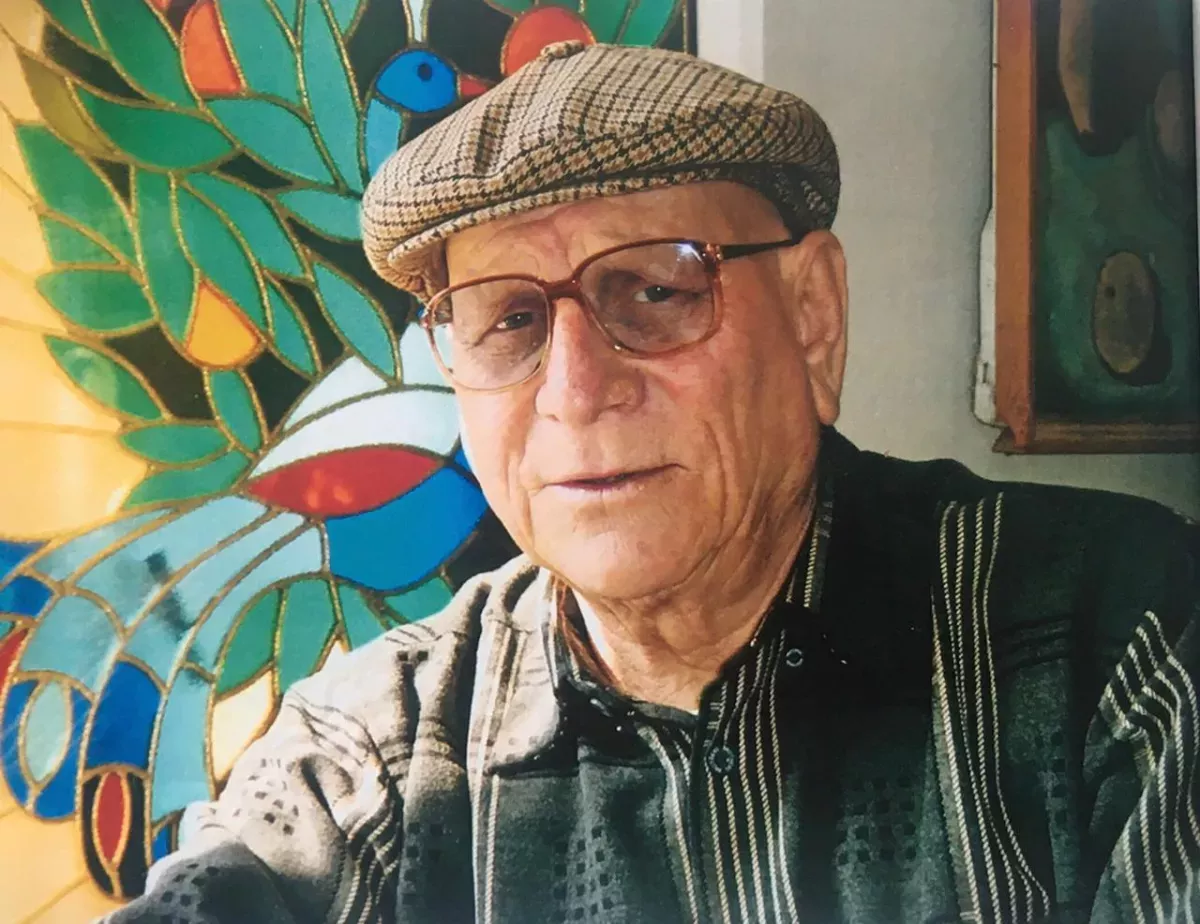
One of the masters whose work adorns Baku is Zokhrab Mutalibov—a monumental artist and the creator of numerous mosaic panels across the country. He has devoted over 17 years to creating stained glass, having finely mastered all the secrets of this exquisite craft. His workshop resembles a jeweler’s studio, where every detail is carefully thought out, and mesmerizing images are born from countless fragments of colored glass. Here, order, cleanliness, and a special atmosphere prevail, reflecting a deep respect for art.
From the very first moments of conversation, it becomes clear: Zokhrab Mutalibov lives for his craft. He speaks passionately about how small pieces of glass transform into complete images, sharing the intricacies of his work and memories of his long journey in this complex yet beautiful craft. Over the years, he has created numerous panels that adorn private homes, public buildings, the Supreme Court hall, the Central Election Commission, and a church near the Ganjlik metro station.
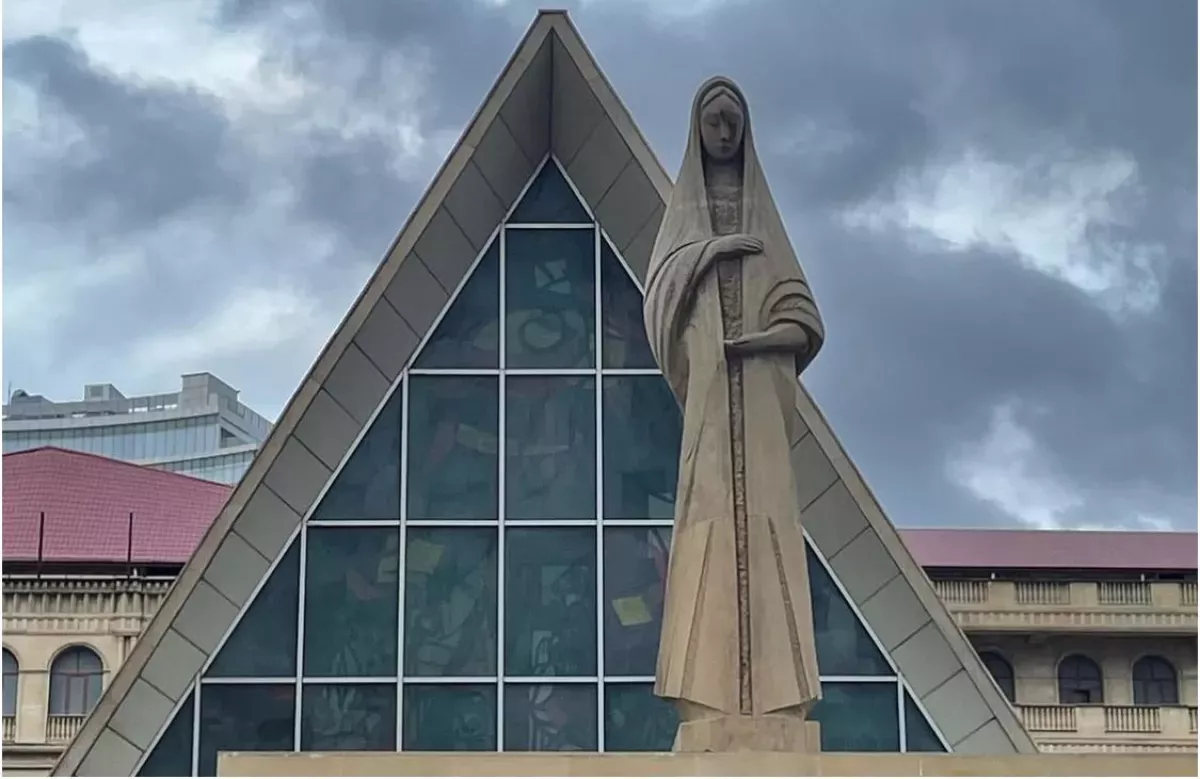
A special place in his biography is occupied by the decoration of the Roman Catholic Church of the Immaculate Conception of the Virgin Mary, created in collaboration with his daughter, Naida Mutalibova. Their joint work, combining the father’s experience with the daughter’s refined artistic vision, became a true masterpiece of monumental art. For this project, Zokhrab Mutalibov was awarded a medal by the Roman Catholic Church—a high honour recognising his talent and contribution to the development of artistic culture.
The Church of the Immaculate Conception of the Blessed Virgin Mary is an active Catholic church and one of the spiritual centers of Baku. Its history is filled with both inspiring and tragic chapters. The city’s Catholic community was established in 1882, when a small chapel first appeared. In 1894, permission was granted to build the church.
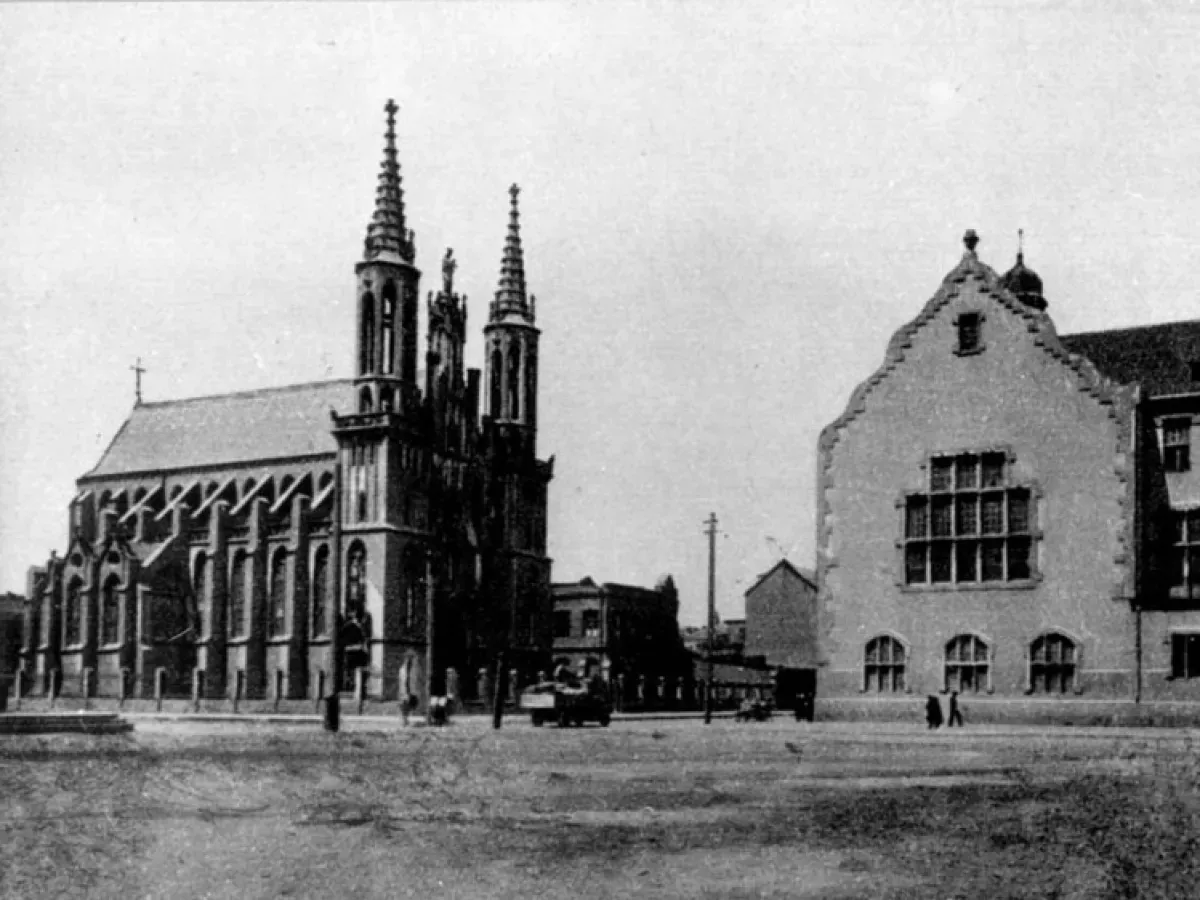
By 1912, the Church of the Blessed Virgin Mary stood tall in Baku—a majestic building that became a symbol of faith and unity for the congregation. However, after the establishment of Soviet power, the community faced repression, and in 1938 the church was destroyed.
The revival of Catholic life began in 1997, when the local community was reestablished. In 2002, a plot of land was allocated for the construction of a new church, and the work was completed in 2006. In April 2007, the church dedicated to the Immaculate Conception of the Blessed Virgin Mary was solemnly consecrated. The project, designed by Italian architect Paolo Ruggiero, combines modern style with elements of neo-Gothic architecture. The church’s distinctiveness is enhanced by a sculpture of the Virgin Mary created by Azerbaijani sculptor Huseyn Akhverdiyev.
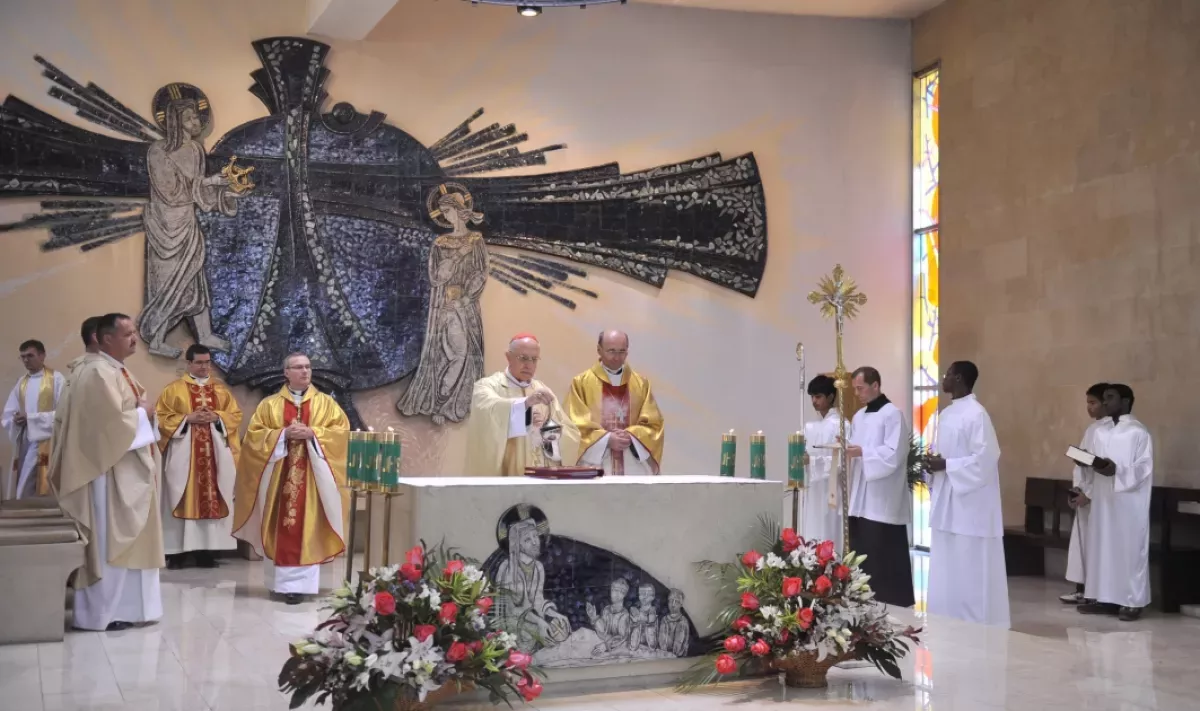
In 2012, to commemorate the anniversary of Pope John Paul II’s visit to Azerbaijan, a solemn Holy Mass was held in the church for the congregation. It was celebrated by Cardinal Fernando Filoni, who came especially from the Vatican. The presence of Azerbaijan’s President Ilham Aliyev and First Vice-President Mehriban Aliyeva gave the event special significance, serving as a testament to respect for spiritual traditions and interreligious dialogue in the country.
The church’s stained glass windows add a special beauty—bright and elegant works of art that bring the interior space to life. They vividly depict the earthly journey of Christ—from his birth to the Ascension. Each scene is filled with deep symbolism and exquisite detail, allowing viewers to discover new meanings again and again in the faces, gestures, and expressions of the figures.
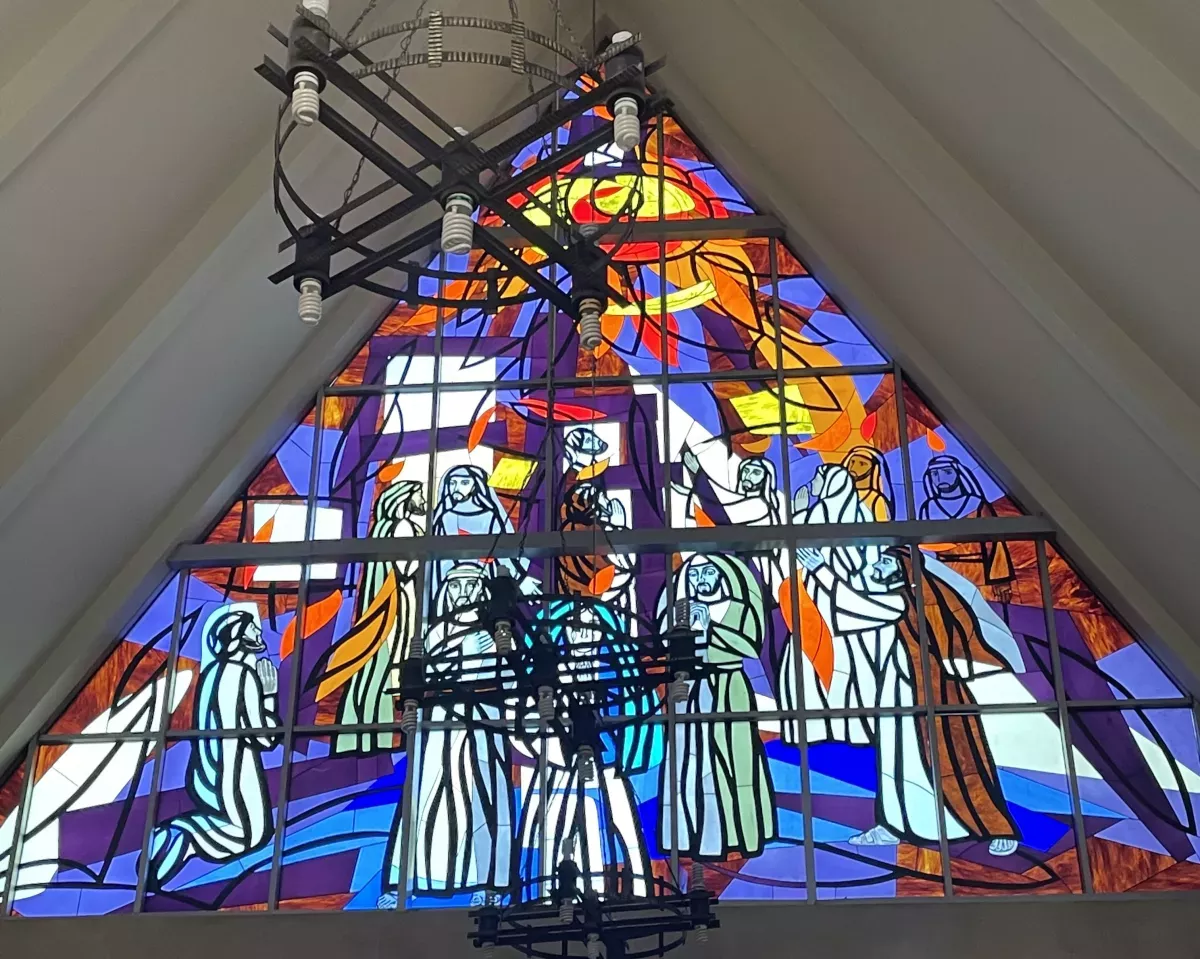
The stained glass window in the upper part of the church wall is especially impressive. Its composition is rendered in a rich color palette dominated by red, orange, and blue, creating a sense of warmth and solemnity. Stylized figures of people in white and light blue tones with clear black outlines are positioned in the center and on the sides. Their poses and gestures convey a wide range of emotions—from prayerful humility to lively conversation. At the top, a large golden circle stands out, resembling a radiant sun or a divine halo, from which rays emanate.
The colors of the stained glass, shimmering in the sunlight, create a special play of light in the church, filling the space with a gentle glow. The interior transforms into a living gallery of sacred history, gaining spiritual depth. The atmosphere becomes truly reverent, making it easy to immerse oneself in prayer or quiet contemplation.
It is thanks to the stained glass windows that the Church of the Immaculate Conception of the Blessed Virgin Mary has gained its unique appearance, becoming a masterpiece of monumental art. Zokhrab Mutalibov’s work not only adorned the church walls but also became a spiritual bridge between the past and the present, bringing light, harmony, and inspiration into its atmosphere. These stained glass windows continue to amaze parishioners and visitors alike, leaving a sense of connection to a great history and becoming a part of Baku’s cultural heritage.
Vahid Shukurov, exclusively for Caliber.Az








